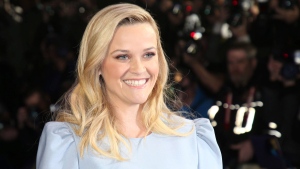Feb 22, 2019
Oscars put spotlight on streaming race that's shaking up Hollywood

As Hollywood’s elite prepare to battle it out for Oscar bragging rights, a bigger contest is shaping up between tech titans that are shaking up the movie business.
Netflix Inc. and Amazon.com Inc. are leading that charge, with both companies poised to add to their growing collection of Academy Awards on Sunday after several years of aggressive spending on original films.
Netflix, for example, has received a record 15 Oscar nominations, including 10 for its Best Picture nominee Roma.
Studios traditionally use Oscar contenders as a way to sell more movie tickets. For Netflix, Roma and its other nominees headline a marketing campaign to sign up more streaming subscribers.
In the case of Amazon, which is reportedly planning to release 30 films a year starting in 2020, its primary goal is to grow its Amazon Prime service. Amazon now has more than 100 million Prime members and it uses original content as a sign-up incentive.
Not that long ago, these strategies were routinely dismissed in Hollywood’s clubby community.
Netflix, for example, launched its first big show House of Cards in 2013. And skeptics immediately pointed to the high price paid, reportedly US$100 million, to land just two seasons of the high-profile original series.

Looking back though, it’s now easy for those early skeptics to see that Netflix was just getting warmed up. The company has since spent an estimated US$28 billion on film and TV projects over the past six years.
Those kinds of budgets might not work for a traditional movie theatre model. But if Netflix’s measurement of success for its spending is subscriber growth, it’s fair to say that bet has paid off. Netflix has added more than 100 million subscribers in that six-year stretch, while its revenue has increased by roughly US$11.5 billion.
And analysts expect the buying binge to continue, with Netflix on pace this year for its biggest commitment yet to content spending.
“We’re coming off a year where we estimate Netflix spent US$12 billion on a cash basis,” CFRA analyst Tuna Amobi told BNN Bloomberg in a television interview last month. “For this year, we expect cash spending could go up another 20 to 25 percent, which could push it north of US$14 billion to US$15 billion.”
As it expands, Netflix is rolling out production hubs in cities like Toronto, where it just locked up eight sound stages and about 250,000 square-feet of office and studio space.
All of that spending by Netflix and Amazon has caught the attention of Apple Inc., which is widely expected to unveil a streaming service of its own at an upcoming event on March 25.
Apple has reportedly teamed up with A-list talent, from Reese Witherspoon to J.J. Abrams, to ensure a splashy debut.
“They could be a very big player,” long-time Apple watcher and venture capitalist Gene Munster of Loup Ventures told BNN Bloomberg in a Feb. 15 television interview.
Munster expects Apple’s service to be limited at first, with roughly five shows, each with 10 to 20 episodes. He estimates Apple is currently spending US$1 billion on its content rollout. And while that’s smaller than Netflix’s budget, he expects Apple’s investment will reach as much as US$5 billion in the next five years.
“We think they could ultimately build a business that could account for three per cent of Apple’s overall revenue. That might seem small, but it would be a comparably sized business to where Netflix will be next year,” Munster said.

While Netflix has an enviable lead, Apple is motivated to build out its services business. As iPhone sales slow, the company is now focusing on taking advantage of its global network of connected devices.
“They’ve got a direct link to 1.4 billion active users that they can promote these video services to – something Netflix can’t do,” Munster said.
Add it all up and the combined spending of these tech titans far exceeds what Hollywood has traditionally spent, even with the film industry’s long track record of big budgets.
Spending estimates from Loup Ventures, CFRA and JPMorgan suggest Netflix, Amazon and Apple could collectively invest more than US$16.5 billion on original content this year. That would represent a nearly five-fold increase in just six years.
All of this has raised the stakes for Hollywood’s traditional players. Walt Disney Co., which leads all studios in Oscar nominations this year, is preparing to reveal a streaming product of its own.
Its highly anticipated Disney+ service will be unveiled to industry analysts at Disney’s investor day on April 11. CEO Bob Iger has called it the company’s “biggest priority” for 2019. Meanwhile, Disney has been shifting away from distributing its big movies on Netflix, so it can release high-profile originals from the brands it controls, such as Marvel and Star Wars, on its own platform.
The shift to streaming was a key reason why Disney paid more than US$71 billion to acquire much of Rupert Murdoch’s Fox empire. The entertainment giant is hoping that arsenal of content will entice consumers to sign up for the new service.
WarnerMedia LLC, created after AT&T Inc.’s US$85 billion acquisition of Time Warner, has also unveiled its own streaming service, with a plan to roll out original shows starting next year. And Hulu, which now has more than 25 million subscribers, is equally hungry to catch up in original content production.
As for Netflix, which kicked off the industry’s spending spree, its CEO says bring it on. “We’re excited for Disney’s launch,” Reed Hastings told analysts on Netflix’s recent earnings conference call.
“There’s a billion hours of television content being consumed today (in the U.S.),” Hastings noted. “[Disney] may grow over a couple of years to 50 million hours a day, but that's out of the billion … That's why we don't get so focused on any one competitor.”







